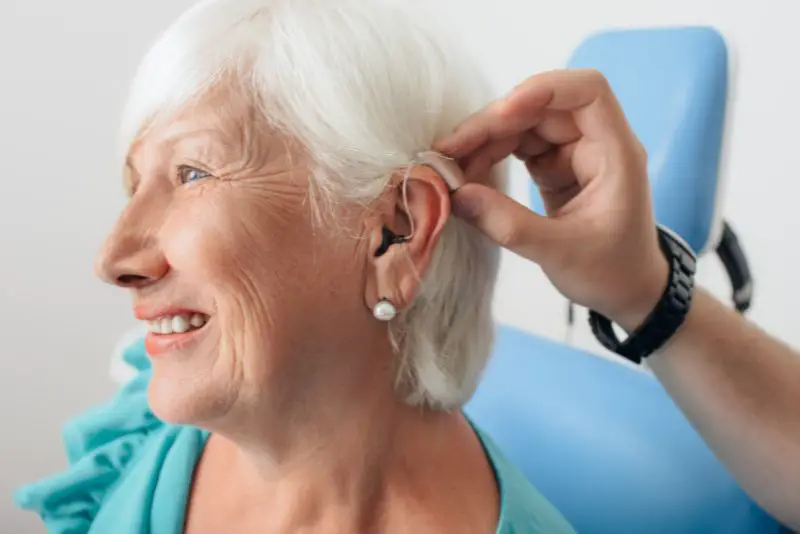Hearing aids are a popular and effective solution for individuals with hearing loss. These small electronic devices are designed to amplify sound and improve the wearer’s ability to communicate and engage with their surroundings.
However, for first-time users, the process of putting in hearing aids can be a bit daunting. In this article, we will guide you through the steps for properly inserting and adjusting your hearing aids.
Check out this video for a visual guide:
Step by Step Instructions
- Before you begin, it’s important to ensure that your hands are clean and dry. This will prevent any dirt, debris, or moisture from getting into the delicate components of the hearing aids, which could potentially damage them.
- Next, you’ll want to locate the battery compartment of your hearing aid. Depending on the model, this may be located on the back or bottom of the device. It’s important to use the correct size battery for your specific hearing aid, as indicated in the user manual. Inserting the battery with the correct polarity is crucial for the hearing aid to function properly.
- Now that you have your hearing aid ready, it’s time to prepare your ear for insertion. Gently pull your ear up and outwards, which helps to straighten the ear canal and make it easier to insert the hearing aid. This step is particularly important if you have a behind-the-ear (BTE) hearing aid, as it requires a clear path for the sound to travel into your ear.
- Hold the hearing aid with the speaker facing forward and the volume control facing up. This ensures that the sound is directed towards your ear canal. Slowly and gently insert the hearing aid into your ear canal, being careful not to force it. It should fit snugly and comfortably in your ear.
- Once the hearing aid is in place, it’s time to adjust the volume. Start by setting the volume to the lowest level and gradually increase it until you can comfortably hear sounds without them being too loud or distorted. It may take a few adjustments to find the perfect setting for your hearing needs.
- To test the functionality of your hearing aid, try speaking or making some noise. You should be able to hear clearly and without any feedback or discomfort. If you experience any issues, such as feedback or discomfort, try adjusting the volume or repositioning the hearing aid slightly.
It’s important to note that everyone’s ears are unique, and the process of inserting hearing aids may vary slightly for each individual. If you have any concerns or difficulties, it’s always a good idea to consult with an audiologist or hearing care professional. They can provide personalized guidance and ensure that you are using your hearing aids correctly and getting the most out of them. They can also help you to decide when you might need new hearing aids.
In addition to proper insertion and adjustment, regular cleaning and maintenance of your hearing aids are essential for their longevity and optimal performance. This includes wiping them with a dry, soft cloth to remove any debris or earwax buildup. It’s also important to keep your hearing aids dry and avoid exposing them to excessive moisture.
By following these steps and taking proper care of your hearing aids, you can enjoy improved hearing and a better quality of life. Remember, it may take some time to get used to wearing hearing aids, but with patience and practice, they can make a significant difference in your ability to communicate and engage with the world around you.



